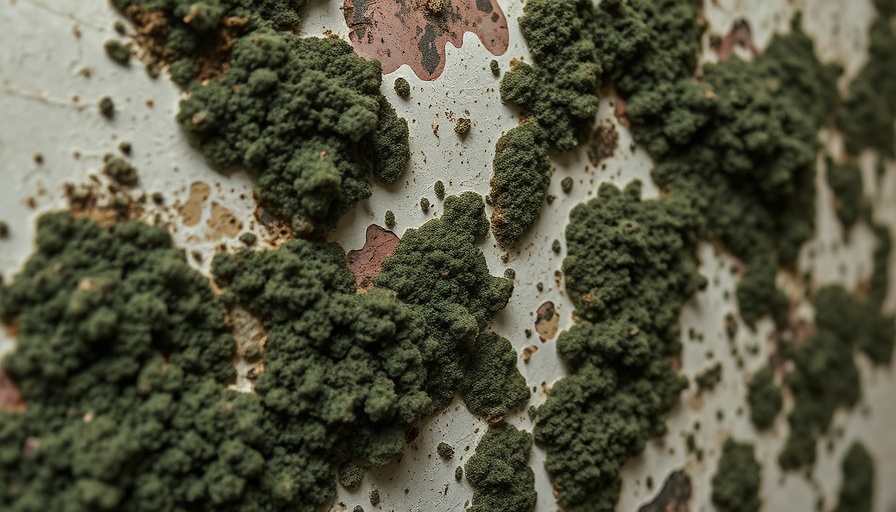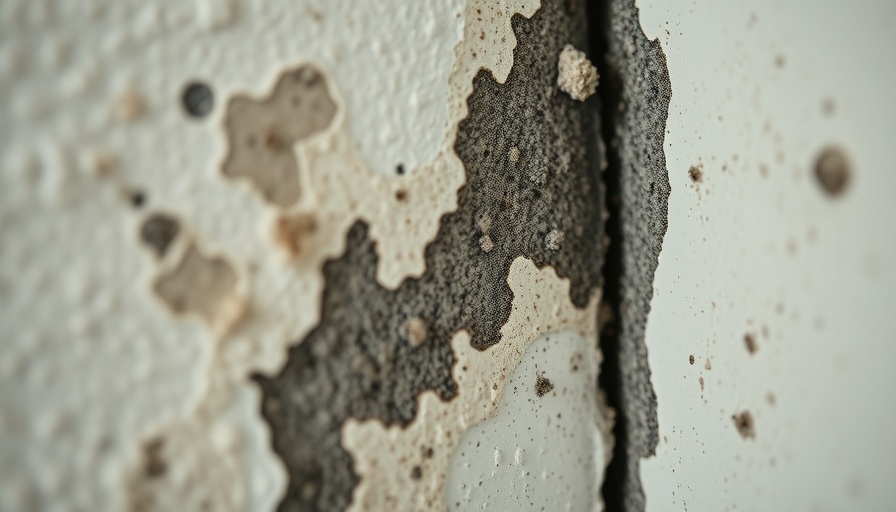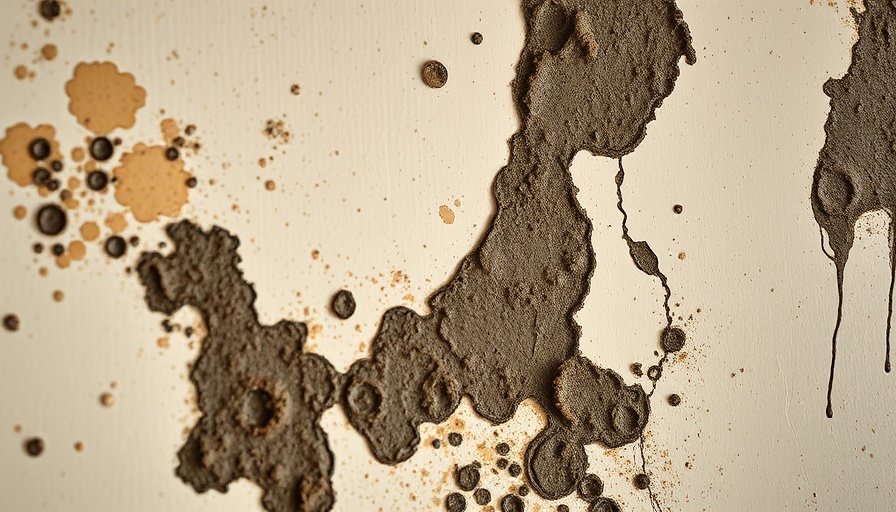
Understanding the Mold Epidemic in Portland: A Growing Concern
In recent years, residents of Portland, Oregon, have been confronted with a hidden danger lurking within their own homes: a mold epidemic. The unique climate—marked by moderate temperatures and high rainfall—creates perfect breeding grounds for this silent invader. As awareness of mold's potential health risks rises, it becomes imperative for homeowners and renters alike to understand the implications that mold can have on their health and property.
The Hidden Dangers of Mold Exposure
While mold plays an essential role in nature by breaking down organic matter, when it invades homes, it can pose severe threats. Varieties such as Cladosporium, Aspergillus, and notably Stachybotrys (often referred to as black mold), can produce allergens and irritants, adversely affecting anyone exposed. Symptoms can range widely, including coughing, sneezing, skin rashes, and in severe cases, respiratory illnesses like allergic fungal sinusitis.
Furthermore, many homeowners may remain unaware of their mold issues until they reach a considerable level, often recognizing the signs only when musty odors or visible patches appear. Proactive measures are essential to prevent mold infestations and ensure a healthy living space.
Climate: The Unforgiving Factor for Portland Homes
The temperate climate of the Pacific Northwest significantly contributes to the mold issue in Portland. The average annual rainfall stands at approximately 36 inches, with humidity levels often remaining high. House structures that incorporate moisture-trapping materials like wood and drywall, combined with inadequate ventilation, cultivate ideal conditions for mold growth. Understanding these environmental factors can help homeowners recognize risks and take necessary preventive actions.
Seasonal Changes: A Double-Edged Sword
As Portland transitions through its seasons, the risks associated with mold growth fluctuates. Fluctuations in temperature and humidity during spring and fall can aggravate indoor air quality, leading to potential mold proliferation. Homeowners should remain vigilant during the rainy season, inspecting roofs, gutters, and basements for moisture buildup. Also, users of heating systems should be mindful to manage indoor temperature and humidity levels to avoid creating damp conditions conducive to mold.
Mold Health Risks: A Closer Look at Vulnerabilities
The health risks stemming from mold exposure vary significantly among individuals, particularly those with preexisting conditions such as asthma or weakened immune systems. Recognizing subtle symptoms that may improve when outside the home serves as a crucial indicator of underlying mold issues. Harmful effects can escalate from mild allergic reactions to severe respiratory infections, illustrating the need for immediate attention to mold-infested environments.
Recognizing Mold: What Every Homeowner Should Know
Identifying mold is key to addressing its presence before it escalates. Visible signs include discolored spots on walls and ceilings, but invisible mold can lurk behind wallpaper or in ventilation systems, often detected by a musty odor. Portland’s residents must educate themselves on these telltale signs to act swiftly and decisively, especially when aware of their home’s moisture issues.
Case Studies: Learning from Real-Life Mold Problems
Several Portland homeowners have faced mold situations that highlight the importance of awareness and proactive action. One family discovered extensive mold growth behind their laundry room wall, which went unnoticed until odor became intolerable. After consulting experts, they learned that absent ventilation caused moisture buildup. Stories like this reinforce the importance of routine checks in potential problem areas.
Professional Mold Removal: When Is It Necessary?
While DIY solutions might initially seem cost-effective, they often fail to address the underlying moisture issues, potentially leading to recurring mold problems. Engaging professionals in mold remediation can significantly improve safety and health. Experts can carry out a thorough assessment, containment, and removal, utilizing specialized tools to ensure complete eradication of mold spores — preventing future growth.
From professional evaluations to advanced cleaning techniques, including high-efficiency particulate air (HEPA) filtration, these services ensure that both visible and invisible mold are handled meticulously. As highlighted by experts, understanding and addressing the source of moisture causing mold's growth can mean the difference between a safe home and ongoing health risks.
Actionable Insights: Preventing Mold and Its Health Risks
To mitigate mold problems in Portland homes, homeowners should prioritize air quality management and moisture control. Regular inspections and prompt remediation of leaks can significantly decrease mold growth probability. Additionally, incorporating dehumidifiers and improving ventilation can also play a crucial role in maintaining a healthier indoor climate. With Portland’s unique challenges, awareness of moisture sources and effective preventive measures must drive homeowners to safeguard their homes.
Equipped with the right knowledge, Portland residents can combat this mold epidemic effectively. Homeowners, renters, and landlords should act on these insights, not only to enhance their living conditions but also to protect their health and investment in their properties.
 Add Row
Add Row  Add
Add 




 Add Row
Add Row  Add
Add 

Write A Comment